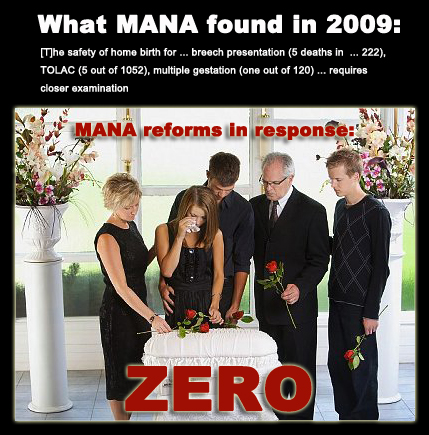The following is from a comment taking issue with Judith Lothian’s post on the Lamaze blog Science and Sensibility praising the MANA study Outcomes of Care for 16,924 Planned Home Births in the United States: The Midwives Alliance of North America Statistics Project, 2004 to 2009. The authors claimed that the study shows homebirth is safe, but it actually shows that homebirth has a death rate 450% higher than comparable risk hospital birth.
This “study” brings up more questions than answers. And I hope MANA seeks to find answers – true answers, and not unfounded self-promoting headline – regarding the safety and risks of OOH birth…
Does MANA reviews these findings, identify clear risk factors that increase risk of death, and set professional standards for safe practice – based on their own research? Why or why not?
… The authors allude to insufficient collaboration between midwives and medical providers – is there any evidence in this sample to support this assertion? Case reviews of each incidence of perinatal death may illuminate this subject.
In this sample, was there any difference in outcomes between midwives practicing in states where CPMs are licensed and in states where they are not?
In this sample, were there individual midwives who had significantly higher perinatal mortality rates in their own practices? If so, what was there any common denominator among these types of midwives?
Let’s start asking the hard questions. Let’s start coming to conclusions about what makes midwifery and OOH birth safest and stop this nonsense of blind self-promotion. A group of health care professionals should adhere to ethical standards – first and foremost – to do no harm.


